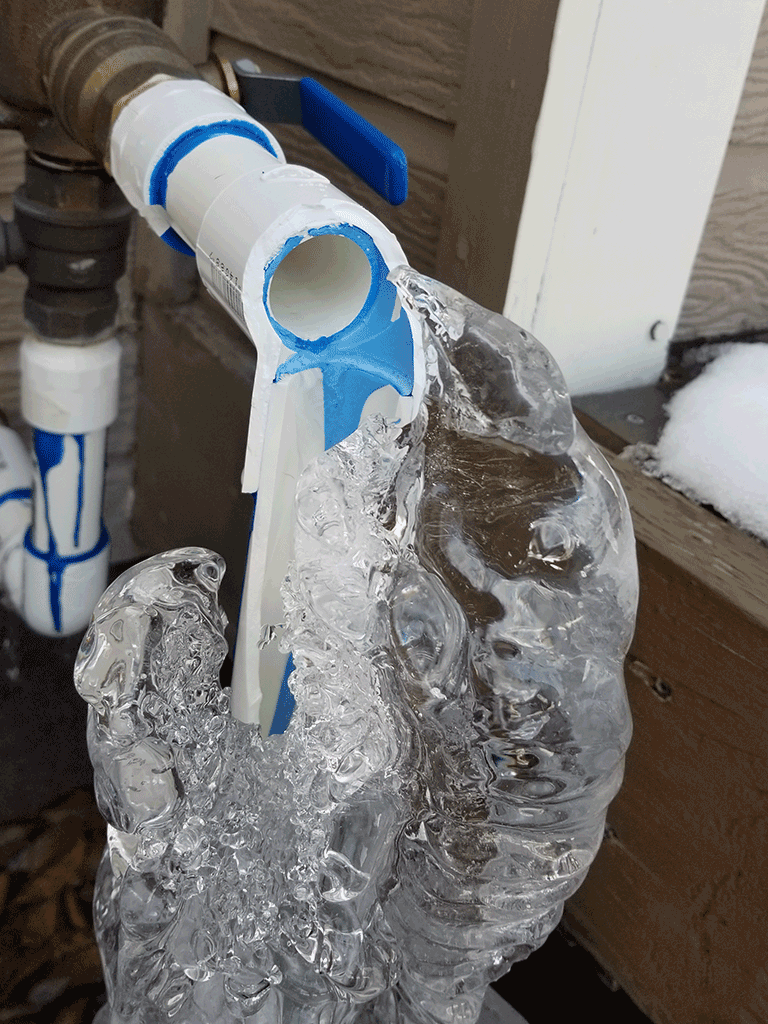Avoiding Frozen Pipes: Top Methods for Winter
Avoiding Frozen Pipes: Top Methods for Winter
Blog Article
Just how do you really feel when it comes to Helpful Tips to Prevent Frozen Pipes this Winter?

Winter can wreak havoc on your pipes, particularly by freezing pipes. Here's how to prevent it from happening and what to do if it does.
Intro
As temperature levels drop, the risk of frozen pipelines rises, potentially causing expensive repairs and water damage. Understanding just how to stop icy pipelines is critical for homeowners in cool environments.
Comprehending Frozen Pipelines
What creates pipelines to freeze?
Pipes freeze when exposed to temperatures below 32 ° F (0 ° C) for extended durations. As water inside the pipelines ices up, it broadens, taxing the pipe walls and potentially causing them to burst.
Risks and damages
Frozen pipes can lead to supply of water disturbances, home damages, and pricey repairs. Burst pipes can flooding homes and create extensive structural damages.
Signs of Frozen Pipeline
Determining icy pipes early can stop them from rupturing.
Just how to recognize icy pipes
Seek decreased water circulation from taps, uncommon odors or noises from pipes, and noticeable frost on exposed pipelines.
Prevention Tips
Shielding vulnerable pipelines
Cover pipes in insulation sleeves or make use of warm tape to safeguard them from freezing temperatures. Concentrate on pipelines in unheated or outside locations of the home.
Heating strategies
Keep indoor spaces sufficiently heated, especially locations with pipes. Open up cabinet doors to permit warm air to flow around pipes under sinks.
Securing Outside Pipes
Garden tubes and exterior faucets
Separate and drain yard pipes before winter months. Mount frost-proof faucets or cover outside faucets with shielded caps.
What to Do If Your Pipes Freeze
Immediate actions to take
If you believe icy pipelines, keep faucets open up to relieve stress as the ice melts. Utilize a hairdryer or towels soaked in hot water to thaw pipelines gradually.
Long-Term Solutions
Architectural adjustments
Consider rerouting pipes away from outside wall surfaces or unheated locations. Include extra insulation to attic rooms, cellars, and crawl spaces.
Upgrading insulation
Invest in high-quality insulation for pipes, attic rooms, and wall surfaces. Proper insulation assists preserve constant temperatures and decreases the risk of frozen pipes.
Final thought
Stopping icy pipes requires aggressive procedures and quick feedbacks. By comprehending the causes, indicators, and safety nets, property owners can shield their plumbing during winter.
5 Ways to Prevent Frozen Pipes
Drain Outdoor Faucets and Disconnect Hoses
First, close the shut-off valve that controls the flow of water in the pipe to your outdoor faucet. Then, head outside to disconnect and drain your hose and open the outdoor faucet to allow the water to completely drain out of the line. Turn off the faucet when done. Finally, head back to the shut-off valve and drain the remaining water inside the pipe into a bucket or container. Additionally, if you have a home irrigation system, you should consider hiring an expert to clear the system of water each year.
Insulate Pipes
One of the best and most cost-effective methods for preventing frozen water pipes is to wrap your pipes with insulation. This is especially important for areas in your home that aren’t exposed to heat, such as an attic. We suggest using foam sleeves, which can typically be found at your local hardware store.
Keep Heat Running at 65
Your pipes are located inside your walls, and the temperature there is much colder than the rest of the house. To prevent your pipes from freezing, The Insurance Information Institute suggests that you keep your home heated to at least 65 degrees, even when traveling. You may want to invest in smart devices that can keep an eye on the temperature in your home while you’re away.
Leave Water Dripping
Moving water — even a small trickle — can prevent ice from forming inside your pipes. When freezing temps are imminent, start a drip of water from all faucets that serve exposed pipes. Leaving a few faucets running will also help relieve pressure inside the pipes and help prevent a rupture if the water inside freezes.
Open Cupboard Doors
Warm your kitchen and bathroom pipes by opening cupboards and vanities. You should also leave your interior doors ajar to help warm air circulate evenly throughout your home.

Hopefully you liked our topic about Helpful Tips to Prevent Frozen Pipes this Winter. Thanks a lot for taking time to read through our piece. Sharing is caring. Helping people is fun. Thank you so much for taking the time to read it.
Call Report this page